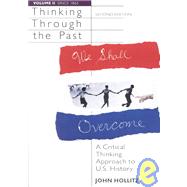| Preface | xiii | ||||
| Introduction | 2 | (7) | |||
|
9 | (15) | |||
|
10 | (1) | |||
|
11 | (1) | |||
|
12 | (10) | |||
|
|||||
|
|||||
|
|||||
|
|||||
|
22 | (1) | |||
|
23 | (1) | |||
|
23 | (1) | |||
|
24 | (29) | |||
|
25 | (1) | |||
|
26 | (1) | |||
|
27 | (24) | |||
|
|||||
|
|||||
|
|||||
|
|||||
|
|||||
|
|||||
|
|||||
|
|||||
|
|||||
|
|||||
|
|||||
|
|||||
|
51 | (1) | |||
|
51 | (1) | |||
|
52 | (1) | |||
|
53 | (28) | |||
|
55 | (1) | |||
|
56 | (1) | |||
|
57 | (22) | |||
|
|||||
|
|||||
|
|||||
|
|||||
|
|||||
|
|||||
|
|||||
|
|||||
|
|||||
|
|||||
|
|||||
|
|||||
|
|||||
|
|||||
|
79 | (1) | |||
|
80 | (1) | |||
|
80 | (1) | |||
|
81 | (33) | |||
|
83 | (1) | |||
|
84 | (1) | |||
|
85 | (27) | |||
|
|||||
|
|||||
|
|||||
|
|||||
|
|||||
|
|||||
|
|||||
|
|||||
|
|||||
|
|||||
|
|||||
|
|||||
|
|||||
|
|||||
|
|||||
|
|||||
|
|||||
|
|||||
|
|||||
|
112 | (1) | |||
|
113 | (1) | |||
|
113 | (1) | |||
|
114 | (27) | |||
|
115 | (2) | |||
|
117 | (1) | |||
|
118 | (20) | |||
|
|||||
|
|||||
|
|||||
|
|||||
|
|||||
|
|||||
|
|||||
|
|||||
|
|||||
|
|||||
|
|||||
|
|||||
|
|||||
|
|||||
|
138 | (1) | |||
|
139 | (1) | |||
|
139 | (2) | |||
|
141 | (23) | |||
|
143 | (1) | |||
|
144 | (1) | |||
|
144 | (19) | |||
|
|||||
|
|||||
|
|||||
|
|||||
|
|||||
|
|||||
|
|||||
|
|||||
|
|||||
|
|||||
|
163 | (1) | |||
|
163 | (1) | |||
|
163 | (1) | |||
|
164 | (29) | |||
|
166 | (1) | |||
|
167 | (1) | |||
|
168 | (23) | |||
|
|||||
|
|||||
|
|||||
|
|||||
|
|||||
|
|||||
|
|||||
|
|||||
|
|||||
|
|||||
|
|||||
|
|||||
|
191 | (1) | |||
|
191 | (1) | |||
|
191 | (2) | |||
|
193 | (25) | |||
|
195 | (1) | |||
|
196 | (1) | |||
|
197 | (19) | |||
|
|||||
|
|||||
|
|||||
|
|||||
|
|||||
|
|||||
|
|||||
|
|||||
|
216 | (1) | |||
|
216 | (1) | |||
|
216 | (2) | |||
|
218 | (27) | |||
|
220 | (1) | |||
|
221 | (1) | |||
|
222 | (21) | |||
|
|||||
|
|||||
|
|||||
|
|||||
|
|||||
|
|||||
|
|||||
|
|||||
|
|||||
|
|||||
|
243 | (1) | |||
|
243 | (1) | |||
|
243 | (2) | |||
|
245 | (35) | |||
|
246 | (3) | |||
|
249 | (1) | |||
|
250 | (28) | |||
|
|||||
|
|||||
|
|||||
|
|||||
|
|||||
|
|||||
|
|||||
|
|||||
|
|||||
|
|||||
|
|||||
|
|||||
|
|||||
|
278 | (1) | |||
|
279 | (1) | |||
|
279 | (1) | |||
|
280 | (25) | |||
|
281 | (2) | |||
|
283 | (1) | |||
|
283 | (20) | |||
|
|||||
|
|||||
|
|||||
|
|||||
|
|||||
|
|||||
|
|||||
|
|||||
|
|||||
|
303 | (1) | |||
|
304 | (1) | |||
|
304 | (1) | |||
|
305 | (36) | |||
|
306 | (2) | |||
|
308 | (1) | |||
|
309 | (29) | |||
|
|||||
|
|||||
|
|||||
|
|||||
|
|||||
|
|||||
|
|||||
|
|||||
|
|||||
|
|||||
|
|||||
|
|||||
|
|||||
|
338 | (1) | |||
|
339 | (1) | |||
|
340 | (1) | |||
|
341 | ||||
|
343 | ||||
|
345 | ||||
|
346 | ||||
|
|||||
|
|||||
|
|||||
|
|||||
|
|||||
|
|||||
|
|||||
|
|||||
|
|||||
|
|||||
|
|||||
|
|||||
|
370 | ||||
|
371 | ||||
|
372 |








